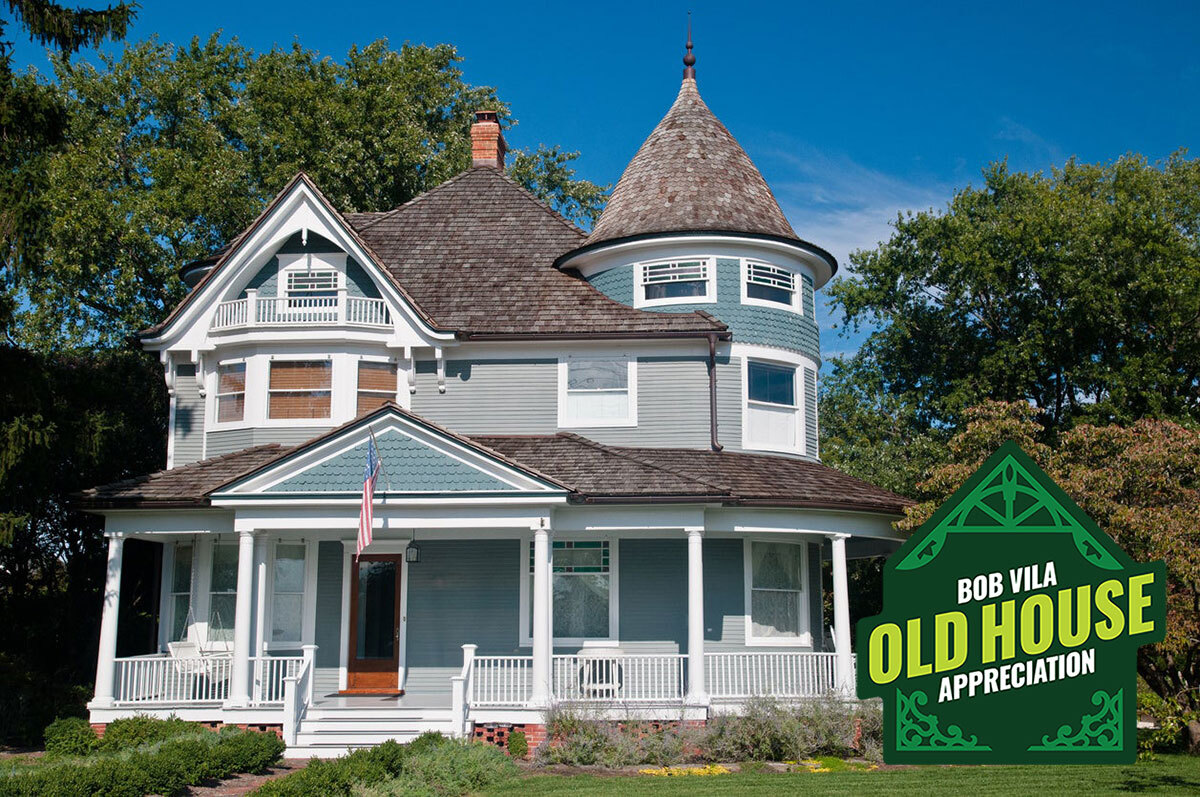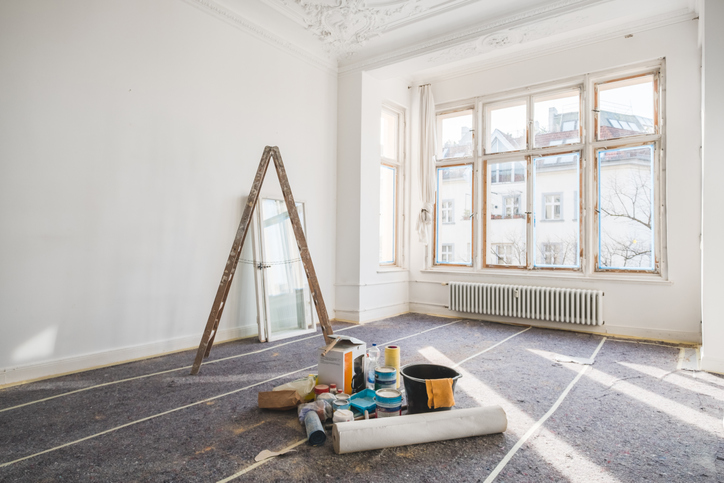

We may earn revenue from the products available on this page and participate in affiliate programs. Learn More ›
This article is part of Old House Appreciation with Bob Vila, a month-long series dedicated to showing you the best places to find historic homes, pros and cons of investing in an older house, potential repairs and precautions, and our favorite examples in a variety of house styles to keep you inspired along the way. We’ve included current market trends mixed with Bob’s tried-and-true advice, our vetted shopping guides, and the behind-the-scenes tips you need to make your old house a home.
There are countless factors to consider when purchasing a home, like its location, style, and square footage. One key consideration to weigh is whether you’re interested in a newer home or an older home. New builds may be outfitted with modern amenities and feature on-trend open plan layouts, but they can’t match the charm and character of an older home.
Listing prices for newer homes tend to be more expensive, but overall home ownership expenses are dictated by far more than the cost of your mortgage. Get to know the hidden costs of cheap old houses for sale to establish which option is actually more economical.
RELATED: The Truths About Buying and Living in an Old House
Older homes cost less up front.
Sellers and real estate agents determine home prices based on a variety of criteria, with the age of the home factoring into the equation. Generally speaking, the newer the home, the higher the cost. According to Rocket Mortgage, the cost of buying a new home is typically 30 percent higher than the cost for buying an older home. But while older homes might save money up front, there are many hidden costs potential buyers should keep in mind.
Older homes can save you money on everyday expenses.
Most older homes are located in areas closer to city centers than newer homes, which are often built in suburbs outside the city. When you factor in the cost of a daily commute, the older home could save residents significant amounts each month in gas, tolls, and car maintenance fees—especially if the older home is in a walkable part of town.
New homes benefit from a neighborhood organization that provides oversight for things like yard maintenance and building additions. The homeowners association fees paid by newer home residents also could cover things like neighborhood park upkeep and access to a community pool.
Older homes don’t usually have homeowners dues, saving a monthly fee that can be significant depending on the area. Community parks, pools, and playgrounds are also often readily available to all residents in an established neighborhood, saving the cost of paying for the same amenities in the suburbs.
Older homes benefit from established track records.
When buying a new house, people are looking for the right floor plan, the right neighborhood, and the right investment. Whether or not that new build is going to appreciate over time or end up depreciating with the entire neighborhood is a gamble. New homes are also built with the latest trends in finishes, which could turn out to be fads. Think about how long it took sunken living rooms to come back in style, and the tiled countertops of the 70s and 80s have yet to be in demand again. The details of a new home that make it attractive to a current buyer might be the very features that turn away a potential buyer in five or ten years.
Older homes have a track record of either appreciation or depreciation that reflects both the home quality of the area and the neighborhood. There are no guarantees an older home is going to continue to appreciate, but if it has trended up for decades, it’s a factor to consider when weighing the value of your investment. Finishes, colors, and architectural details of an older home are often assets as well, offering potential future owners charm and character.
RELATED: 19 Instagram Accounts to Follow if You Love Old Homes

Older homes come with higher maintenance costs.
After moving into a new house, home buyers likely can go a few years without having to undertake any major repairs. Older homes, on the other hand, often require maintenance sooner, and the cost can add up. While an older house might have been well-maintained over the years, it will still likely require some upgrades.
Before committing to purchasing an older home, be sure to get a full home inspection to ascertain whether it has any major issues. Repairing cracks in a foundation, replacing an old roof, and replacing knob-and-tube wiring are some of the priciest projects to undertake.
A study from the American Housing Survey (AHS) found that people who own older homes pay more for regular maintenance than owners of newly built houses. Of all homeowners, 26 percent paid more than $100 a month in maintenance costs. However, only 11 percent of owners who live in newly constructed homes paid that much.
Of course, how an older home fares over time is dependent on the quality of its original construction and the location of the home. Areas where homes are exposed to humidity, heavy snow or ice, and tropical storm winds will sustain more damage in the long term than homes in mild climates.
One way to minimize the total cost of repairs is to schedule regular maintenance with a professional for your major systems, like HVAC, plumbing, and electrical. A good home warranty can help offset the cost of regular visits.
While some maintenance costs may be higher, old houses are often made with higher-quality materials that are made to last. Many were built with wood from old-growth trees, which are more resistant to rotting and warping. They may feature plaster and lath walls—rather than drywall—which are more durable and provide increased sound insulation.
RELATED: The 6 Best Home Warranty Companies, Vetted
Older homes have higher utility costs prior to updating.
When buying a home, it’s important to take future utility bills into consideration as you determine what you can afford in home prices. Over the years, building codes have become increasingly strict, causing newer homes to be more energy efficient than old houses. These new codes have led to homes built with more insulation, better airflow, and more energy-efficient designs.
A study from the most recent Residential Energy Consumption Survey (RECS) conducted by the Energy Information Administration (EIA) found that heating a newer home is 21 percent cheaper, even if it’s a larger size than an older home in the same area. The U.S. Census Bureau’s American Housing Survey states that electricity costs 17 percent more in older homes (50 to 100 years old), while gas costs 38 percent more.
Some of this cost can be offset by established landscaping, such as shade trees. And all of this can be remedied if the home is updated to more modern standards.

Energy-efficient upgrades and home size can save money.
Though less efficient, older homes can be renovated to save energy, and their smaller size can offset higher usage in newer homes that tend to be larger. The cost of running appliances, electronics, and lighting is 18 percent higher in homes built after 2000 than in older homes.
Replacing old windows with energy-efficient, double-pane windows is a great way to reduce heating costs. Expect each double-pane window to cost between $600 and $800. Upgrade appliances and HVAC systems to new, energy-efficient models to decrease their cost of operation.
RELATED: 12 Ways to Make an Old Home More Energy Efficient
Older homes cost more to insure.
While homeowners who live in older houses may not have to pay a monthly HOA fee, one expense that could be higher than for a newer home is property insurance. Because they’re constructed under stricter safety codes, newly built homes are less expensive to insure. According to the National Association of Home Builders (NAHB), the average cost of property insurance per square foot can be nearly a fourth lower for new homes than for those 40 years old or more. For historic homes built at least 100 years ago or in need of major repairs, costs tend to rise even more.
Despite the increased cost of repairs, maintenance, utilities, and insurance, older homes may still cost less overall, depending on their sale price, location, and age. It’s important to calculate these additional costs and factor them into your budget to decide which option is best for you.
